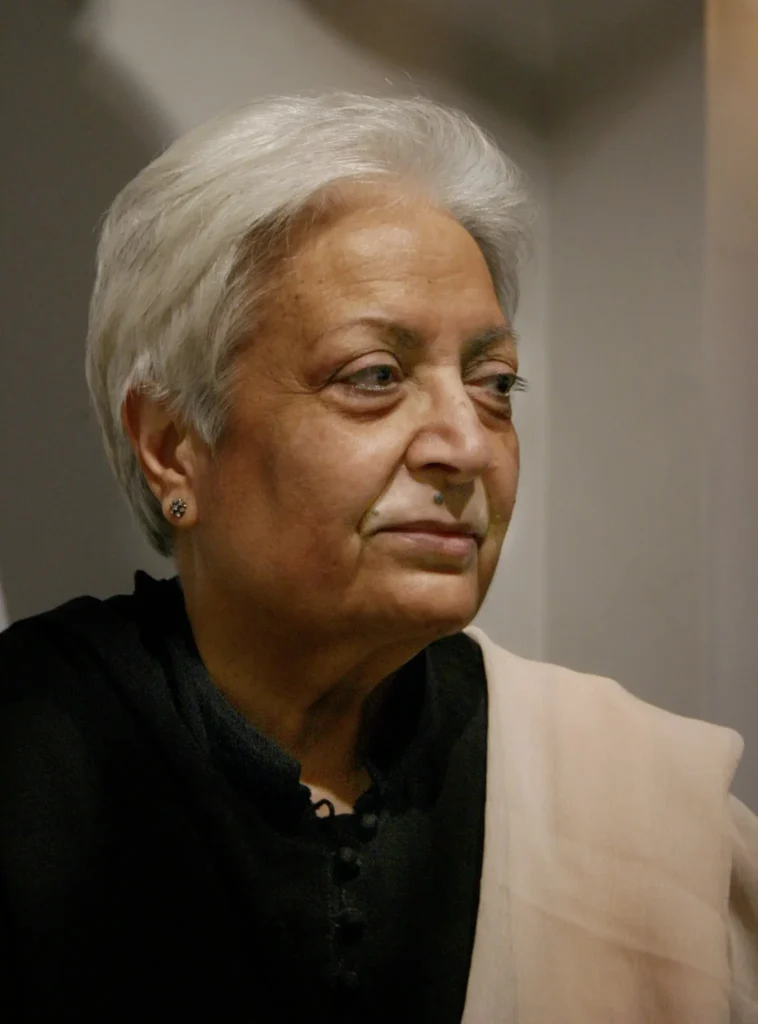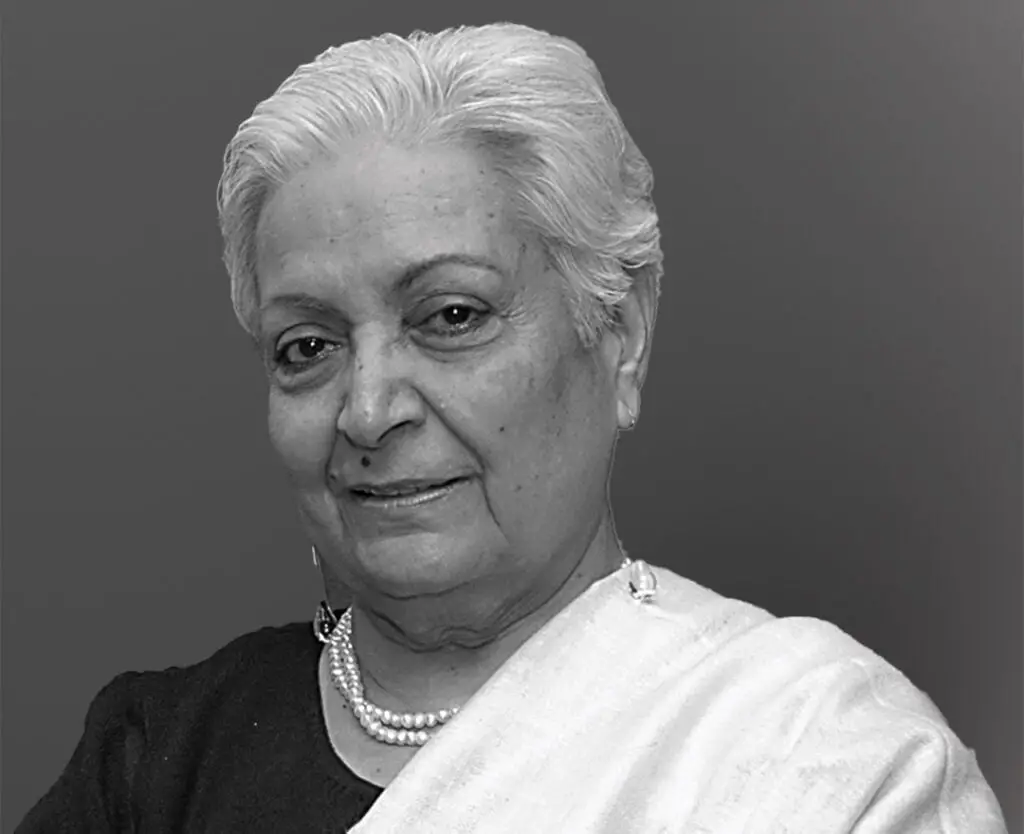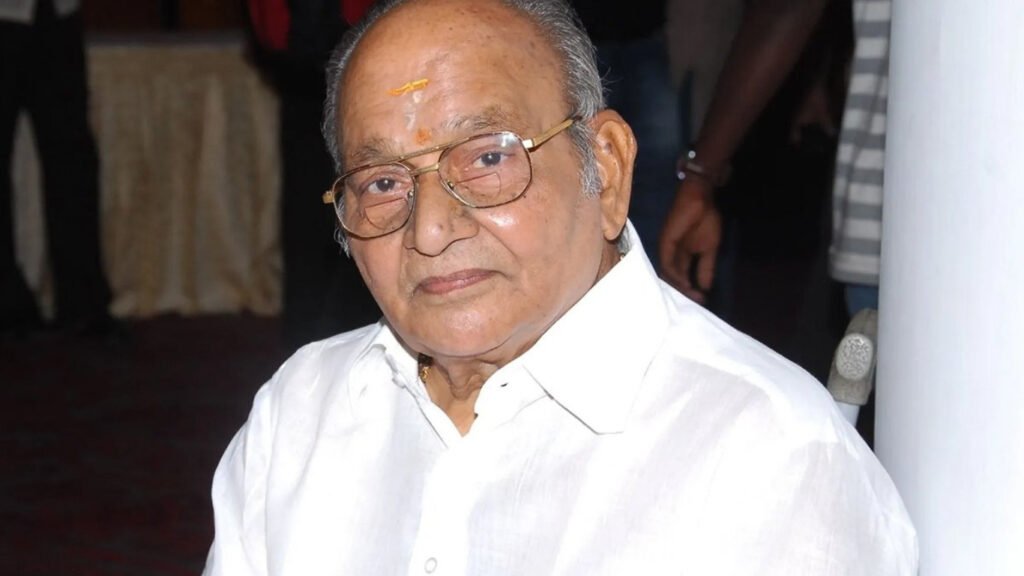Zarina Hashmi was a highly respected Indian American artist known for her abstract and geometric works in printmaking and sculpture.

Her work explores themes of home, displacement, borders and memory that were deeply influenced by her own life experiences.
Hashmi’s work has received critical acclaim throughout her career and has been displayed in galleries and museums around the world. Her work was often inspired by Islamic art and architecture.
She was named as one of the 100 most influential people in the world by Time magazine in 2010.
Hashmi was awarded the Mitchell Foundation Grant Awards in 2011 for significant contributions to the contemporary art field.
Physical Stats
| Full name: | Zarina Hashmi |
| Profession: | Indian- American Printmaker and Sculpture |
| Born: | 16 July 1937, Aligarh, India |
| Death: | 25 April 2020, London, England |
| Best known for: | For “The Dividing Line” |
| Age: | 82 Years |
| Education: | Math Honors from Aligarh Muslim University and Printmaking from Bangkok Art Institute |
| Parents: | Sheikh Ghulam Hashmi and Nazneen Begum |
| Marital Status: | Married |
| Spouse: | Iqbal Jeffrey |
| Nationality: | American |
Early Life
Zarina Hashmi was born on 16 July 1937 in a middle-class Muslim family in Aligarh, India. After the partition of India in 1947, her family was displaced and she went to Pakistan.

Her father Sheikh Ghulam Hashmi was a mathematics professor at Aligarh Muslim University and mother Nazneen Begum was a housewife.
Hashmi was brought up in Aligarh and received his primary education from here. She completed his graduation with Mathematics from Aligarh Muslim University.
Hashmi developed interest in graphic design during his graduation. After her marriage she moved to Bangkok where she studied printmaking at the Bangkok Art Institute.
Hashmi moved to Paris in 1963 to study intaglio at Atelier-17 with Stanley William Hayter. During his four-year stay there he also began experimenting with woodblock printing and sculpture.
In 1974, Hashmi went to Tokyo to study woodblock printing with Toshi Yoshida.
Career
Zarina Hashmi started her career as a printmaker at Garhi Studio in Delhi after coming from Tokyo.

After working in India for about a year, Hashmi moved to New York in 1976. There he continued creating his art exploring themes of displacement, memory and identity.
Hashmi’s work often included geometric shapes and maps and his work has been displayed in major museums around the world.
- The Venice Biennale
- The Guggenheim Museum in New York
- The Tate Modern in London
- The Whitney Museum of American Art
- The Metropolitan Museum of Art
She held several teaching positions at institutions such as the University of California, San Diego and the University of Pennsylvania.
Hashmi’s most famous works include “Letters from Home” (1990), the woodblock print “Homeland” (2003), “Untitled House” (2006).
Guggenheim Museum, New York
Zarina Hashmi had an important role in the Guggenheim Museum in New York. Zarina Hashmi had an important role in the Guggenheim Museum in New York. In 2014, the museum held a retrospective of her work titled “Zarina: Paper Like Skin”. Which showcased his minimalist and abstract works which explored themes of displacement, memory and identity.
The exhibition featured over 60 of Hashmi’s works including prints, drawings, sculptures and installations. The exhibition was curated by Sandhini Poddar and was the first major retrospective of Hashmi’s work in the United States.
Zarina Hashmi Best Books
- Paper House (2007)
- Zarina Hashmi: recent work (2011)
- Zarina Hashmi: Noor (2011)
- Zarina: Paper Like Skin (2012)
- Zarina: Atlas of My World (2012)
- Zarina: Folding House (2014)
- Zarina: Weaving Darkness and Silence (2017)
- Zarina: Directions to My House (2018)
Awards and achievements
Zarina Hashmi has received numerous awards and honors during her career, including:
- President’s Award for Printmaking in India (1969)
- Grand Prize Award Bhopal, India (1989)
- Skowhegan Medal for Sculpture (1991)
- Lifetime Achievement Award for the Arts (2004)
- Pakistan’s highest civilian award for the arts, Sitara-e-Imtiaz (2011)
- National Endowment for the Arts Fellowship Awards
- In 2011, Hashmi represented India at the Venice Biennale.
- In 2011, Hashmi was awarded the Padma Bhushan, one of India’s highest civilian honours.
Personal Life
Zarina Hashmi was married to Indian Foreign Service officer Iqbal Jeffrey in 1958 at the age of 21. She has no children.
After marriage, she went to Bangkok with her husband. Her husband worked in the foreign service, due to which she also lived in London, Tokyo and New York.
Due to her increasing age and declining health, Zarina spent most of her time in London with Saima and Imran. She enjoyed spending time with her family, especially her great-grandmother, Shanaya.
Zarina Hashmi died on 10 February 2022 in London at the age of 83. He is remembered as one of India’s most important and influential modernist artists.
Zarina Hashmi “Atlas of My World”
Atlas of My World is a book by Zarina Hashmi which was published in 2012. The book is a collection of prints, drawings and photographs that reflect themes of memory, displacement and identity.
The book includes Hashmi’s most iconic works, abstract maps that explore the idea of home and belonging. It also includes personal photographs that provide insight into his creative process and life experiences.
The book also includes essays by art historians and curators who explore its importance in the contemporary art field.
Overall, this is an important book that contains a rich and insightful exploration of the artist’s life and work.
Zarina Hashmi “Home is a Foreign Place”
“Home is a Foreign Place” is a print series by Zarina Hashmi created in 1999. It consists of 36 prints of a simple map that provides directions to the artist’s home in New York City.
The prints are created using traditional techniques such as woodblock printing and letterpress. And they include elements of calligraphy and other text-based art forms. The maps themselves are deliberately simplistic and abstract, containing only the most essential details.
In this series, Hashmi has talked about home and relationships. They also explore ways we can create a sense of place in an increasingly complex and globalized world. The series has been exhibited internationally and is considered one of his most important works.
Zarina Hashmi “Letters from Home”
“Letters from Home” is a series of works by Zarina Hashmi that include prints and sculptures. The series is based on letters Hashmi received from his family in India while he was abroad. The paper explores Hashmi’s themes of family connectedness, his work, memory, displacement and longing.

Prints in the series include maps, diagrams, and text that reference the letters. Whereas sculptures are made of materials like paper, wood and metal. “Letters from Home” is one of Hashmi’s most important series which has been displayed in museums around the world.






